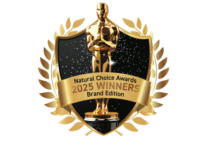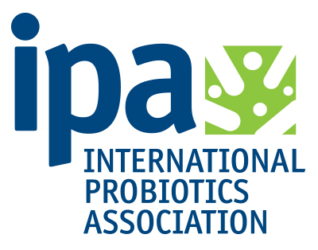
WholeFoods Magazine
Otitis Media: A Role for Probiotics in Childhood Ear Infections?

One of the most common infectious diseases in children, otitis media (OM) affects the middle ear and is typically characterized by earache. Some children are prone to having multiple ear infections, which can lead to hearing problems and other serious complications. While antibiotics have been the traditional treatment, growing concerns over antibiotic resistance and side effects have sparked interest in alternative remedies, such as probiotics.
This article delves into the current understanding of the bacterial microbiome in OM patients and explores the potential use of probiotics as a therapeutic option.
Otitis media, in brief
Different forms of OM have been identified. The spectrum encompasses acute otitis media (AOM), recurrent acute otitis media (RAOM), otitis media with effusion (OME), chronic otitis media with effusion (COME), and chronic suppurative otitis media (CSOM).
A common pathway to all forms of OM is impaired function of the Eustachian tube and inflammation of the middle ear. As it is a multifactorial condition, anatomical, host-related, and environmental factors play a role in OM. Host factors that increase the risk for OM are, for instance, younger age, genetic predisposition, race and ethnicity, immunodeficiency, and laryngopharyngeal reflux. Environmental factors that have a negative influence on OM, on the other hand, are winter season, formula feeding or limited breastfeeding, exposure to cigarette smoke, low socioeconomic status, presence of older siblings, daycare attendance, and pacifier use.
The pathogenesis of OM is complex, involving the adaptive and native immune system, Eustachian-tube dysfunction, viral and bacterial load, and genetic and environmental factors.
Nearly 80% of children will have at least one episode of AOM, with a peak age of occurrence between 6 to 12 months. Fortunately, most cases of AOM resolve without significant consequences or long-term impacts, either on their own or with the aid of antibiotics. However, when OM becomes chronic or repeatedly recurs, it can result in adverse effects.
Microbial Etiology of Otitis Media
Both viruses and bacteria are implicated in causing AOM. In children between 6 months and 3 years of age, about 90% of episodes of AOM are linked to a viral upper respiratory tract (URT) infection.
This viral infection leads to inflammation in the nasopharynx and Eustachian tube, creating a negative pressure in the middle ear and allowing bacteria and/or viruses to move in and cause infection. The likelihood of developing AOM after a viral URT infection is related to the number of pathogens colonizing the nasopharynx.
Although the spectrum of disease differs in symptom duration, severity, and long-term complications, they all share a common characteristic: middle ear effusion (MEE), which is a collection of fluid that contains a diverse microbiome.
The most commonly isolated bacteria via traditional bacterial culture from the MEE of children with OM were Haemophilus influenzae, Streptococcus pneumoniae, and Moraxella catarrhalis. In one study, half of the children carrying these developed AOM after a viral URT infection, compared to only 10% if none of these pathogens are present. However, newer techniques such as next-generation sequencing have been instrumental in the systematic detection of novel candidate organisms, such as Alloiococcus otitidis in OM.
Three partially overlapping disease mechanisms are observed: interactions with the nasopharyngeal epithelium, interactions with the host immune system, and the formation of polymicrobial biofilms.
Numerous factors influence the respiratory microbiota and/or bacterial density; conditions that closely mirror the aforementioned risk factors for AOM, further implicating the involvement of respiratory microbiota in AOM.
Probiotics & Otitis Media
Probiotics have the potential to enhance respiratory microbiota through various mechanisms, including stabilization of gut microbiota, preservation of epithelial cell barrier function, regulation of immune function, competition with pathogens for nutrients and epithelial cell adhesion sites, and production of bacteriocins and other inhibitory substances.
The use of probiotics has been studied as a means of preventing and treating OM in children. Studies on probiotics delivered both orally (systemic immune effects) and nasally (direct contact with the nasopharyngeal niche and pathogens) have shown variable results.
A 2019 meta-analysis involving 16 studies totaling 3,488 children found that probiotic usage reduced the incidence of AOM in some studies. The effect, however, did not extend to children prone to AOM (experiencing recurrent episodes).
In 2020, another review (13 studies) focused on probiotics and their role in preventing AOM in children. Half (2/4) of the studies that used nasal probiotic formulations showed a significant difference in reducing otitis media, while only a third (3/9) of the studies using oral formulations suggest benefit in reducing AOM. None of the studies demonstrated significant adverse effects from probiotics. However, the authors cautioned that the overall low quality of studies makes it difficult to draw definitive conclusions.
Takeaway
A range of different probiotics may provide protection against acute otitis media (AOM) in children not prone to AOM.
Uncertainties about the optimal strain, as well as the duration, frequency, and timing of probiotics administration, hamper the interpretation of results.
There is a clear need for more, and larger, well‐conducted randomized controlled trials to test readily available probiotic preparations for the management of AOM.
Key references
Chen, Tzu Yu et al. “No evidence from a systematic review for the use of probiotics to prevent otitis media.” Acta paediatrica (Oslo, Norway : 1992) vol. 109,12 (2020): 2515-2524. doi:10.1111/apa.15368
Cohen, Robert et al. “Probiotics and prebiotics in preventing episodes of acute otitis media in high-risk children: a randomized, double-blind, placebo-controlled study.” The Pediatric infectious disease journal vol. 32,8 (2013): 810-4. doi:10.1097/INF.0b013e31828df4f3
Di Pierro, Francesco et al. “Oral use of Streptococcus salivarius K12 in children with secretory otitis media: preliminary results of a pilot, uncontrolled study.” International journal of general medicine vol. 8 303-8. 15 Sep. 2015, doi:10.2147/IJGM.S92488
Marom, Tal et al. “Complementary and Alternative Medicine Treatment Options for Otitis Media: A Systematic Review.” Medicine vol. 95,6 (2016): e2695. doi:10.1097/MD.0000000000002695
Nogues, Juan Carlos et al. “Review of otitis media microbiome studies: What do they tell us?.” Laryngoscope investigative otolaryngology vol. 5,5 936-940. 21 Sep. 2020, doi:10.1002/lio2.460
Patel, Janak A et al. “Nasopharyngeal acute phase cytokines in viral upper respiratory infection: impact on acute otitis media in children.” The Pediatric infectious disease journal vol. 28,11 (2009): 1002-7. doi:10.1097/INF.0b013e3181aa5b13
Revai, Krystal et al. “Association of nasopharyngeal bacterial colonization during upper respiratory tract infection and the development of acute otitis media.” Clinical infectious diseases : an official publication of the Infectious Diseases Society of America vol. 46,4 (2008): e34-7. doi:10.1086/525856
Rosario DC, Mendez MD. Chronic Suppurative Otitis. [Updated 2022 Mar 15]. In: StatPearls [Internet]. Treasure Island (FL): StatPearls Publishing; 2022 Jan.
Rovers, Maroeska M et al. “Otitis media.” Lancet (London, England) vol. 363,9407 (2004): 465-73. doi:10.1016/S0140-6736(04)15495-0
Schilder, Anne G M et al. “Otitis media.” Nature reviews. Disease primers vol. 2,1 16063. 8 Sep. 2016, doi:10.1038/nrdp.2016.63
Scott, Anna M et al. “Probiotics for preventing acute otitis media in children.” The Cochrane database of systematic reviews vol. 6,6 CD012941. 18 Jun. 2019, doi:10.1002/14651858.CD012941.pub2
Sillanpää, Saara et al. “Next-Generation Sequencing Combined with Specific PCR Assays To Determine the Bacterial 16S rRNA Gene Profiles of Middle Ear Fluid Collected from Children with Acute Otitis Media.” mSphere vol. 2,2 e00006-17. 22 Mar. 2017, doi:10.1128/mSphere.00006-17
van den Broek, Marianne F L et al. “Translating Recent Microbiome Insights in Otitis Media into Probiotic Strategies.” Clinical microbiology reviews vol. 32,4 e00010-18. 3 Jul. 2019, doi:10.1128/CMR.00010-18
Venekamp, Roderick P et al. “Antibiotics for otitis media with effusion in children.” The Cochrane database of systematic reviews vol. 2016,6 CD009163. 12 Jun. 2016, doi:10.1002/14651858.CD009163.pub3
Authorship
The International Probiotics Association (IPA) is a global non-profit organization bringing together through its membership, the probiotic sector’s stakeholders including but not limited to academia, scientists, health care professionals, consumers, industry, and regulators. The IPA’s mission is to promote the safe and efficacious use of probiotics throughout the world. Holding NGO status before Codex Alimentarius, the IPA is also recognized as the unified “Global Voice of Probiotics” around the world.
Clare Fleishman, MS, RDN, bridges the gap between science and health across most platforms: major newspapers, magazines, books (Globesity), workshops, social media, and websites. In 2010, she launched www.ProbioticsNow.com to share the cascade of discoveries in the microbiome. Always amazed at this “forgotten organ” Fleishman also creates white papers, blogs, videos, and social media for the International Probiotics Association. In 2022, she published a book titled Fertility: Why Microbes, Weight & Nutrition Matter.
IPA disclaimer: Probiotics have different characteristics, qualities and actions that are unique to the specific strain or combinations. The label should identify the genus, species and strain for each microorganism in the product (i.e. Lactobacillus acidophilus IPA001). If a claim pertaining to individual strains or a blend of strains contained in the product is made, the manufacturer should maintain evidence that the amount(s) provided in the product is consistent with the scientific evidence in support of the claim.








